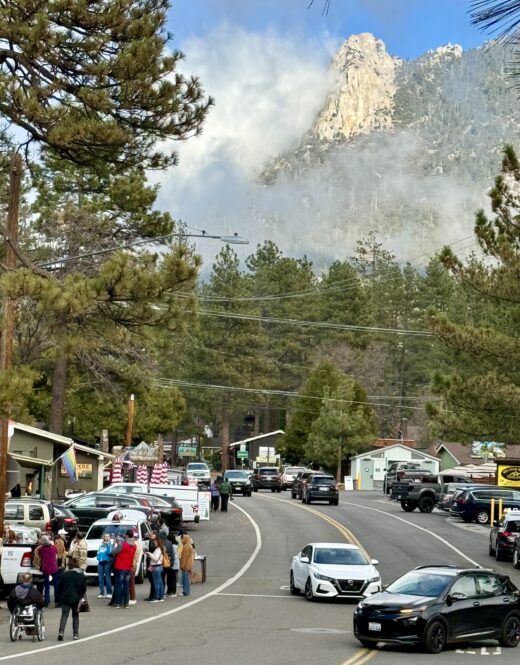On Sept. 27, 2023, the Wildland Fire Mitigation and Management
Commission (WFMMC) released its 340-page report. It included 148
recommendations to the Biden Administration as well Congress and state,
local and tribal governments.
On March 12, 2024, the U.S. Senate Committee on Energy and Natural
Resources held a hearing with members of the Administration and of the
committee.
Sen. Joe Manchin (D-WV), committee chair, opened the hearing and stated
its purpose was to hear about its “recommended policies to improve
federal forest and wildfire management.”
“Over the course of a year, [the commission] examined everything from
active forest management to contracts for firefighting aircraft and came
up with 148 unanimous recommendations,” Manchin said. “We’re going to
focus on recommendations targeted at the federal land management
agencies.”
Ironically, Manchin noted that the hearing was only two weeks after the
Smokehouse Creek Fire that burned more than a million acres in Texas,
the largest fire in the state.
Committee’s ranking member Sen. John Barrasso (R-WY) raised concerns
about the Happy Jack Fire that had burned 6,600 acres near Cheyenne,
Wyoming at the beginning of the month.
“This is a sobering reminder; the wildfire crisis won’t solve itself,”
he shared. “We can’t keep throwing money and research at the problem. We
need to get back to basics and start managing the forest in a serious
and credible way.”
Putting wildfire in perspective was Madelene McDonald, watershed
scientist for Denver Water, and also a member of the commission, who
shared. “It is not the presence of wildfire itself on the landscape that
is the core issue; it is often the impacts of wildfire when fire burns
with uncharacteristically high severity.”
One issue members noted was that many high-risk fire areas are
frequently populated with small-diameter, low-value trees, according to
Manchin. Consequently, they were hoping the witnesses would address the
options of invigorating the timber harvest industry to promote more
thinning.
“The wood processing industry, which broadly includes sawmills, pallet
mills, firewood producers, post and pole facilities, biomass power
facilities and other similar uses, can help to offset the cost of forest
management, and is a critical and necessary tool to accomplish forest
management goals and reduce our wildfire risk across our forested
landscapes,” said Cody Desautel, executive director for the Confederated
Tribes of the Colville Reservation in Washington state and a commission
member.
One witness directed attention to the tables and chairs around the
hearing room and noted that was an example of how thinning can create
benefits for many and protect the forests.
Sen. Martin Heinrich (D-NM) referenced a study that indicated that old
growth forests have greater capacity to capture and store carbon and
were more fire resistant.
Firefighter pay and benefits was the other major topic of the hearing.
All of the elected officials were strong advocates of ensuring
firefighters were paid appropriately for the work and the risk of that
work. While a temporary increase in pay was recently approved, but only
in effect until the end of the fiscal year, all were looking at the
Administration to offer a proposal with permanent changes in pay and
benefits.
As WFMMC member and currently Deputy Under Secretary for Natural
Resources and Environment at the U.S. Department of Agriculture, Meryl
Harrell also noted the continuing growth of wildfires.
“This is an urgent crisis. Our best science indicates that the
frequency, size, and severity of wildfires are projected to increase,
including in areas that have little to no history of wildfire. This is a
challenge that crosses the natural and the built environment, from rural
and urban communities to the lands that surround them.”
In 2023, the U.S. Forest Service treated a record 4.4 million acres,
including treating 1.95 million acres, a record with prescribed fire,
according to Harrell. Funding for these types of projects will continue
to increase, she said. Last June, the Forest Service released its
strategy for prescribed fires and last month, the strategy to increase
training for prescribed fire training also was released.
Joan Mooney, principal deputy assistant secretary for policy,
management, and budget at the U.S. Department of the Interior, stressed
the Administration’s intention to focus on using aviation equipment,
including drones, in future fire responses.
With respect to firefighters’ pay, Harrell emphasized that the
president’s 2025 budget includes proposals for significant compensation
reforms to increase the nation’s investments in the wildland fire
management workforce.
In addition to proposals that promote affordable housing and health and
well-being, other improvements included are a special base rate salary
table for wildland firefighters; a new premium pay category that
provides some additional compensation tied to incident response; and
authorization to grant paid rest and recuperation leave to employees
returning from certain multiday incidents related to wildland fires.
Not just compensation, but training is important, said McDonald. “We
must focus significant attention on expanding this workforce. Congress
has a vital role to play in supporting the expansion of this workforce
through funding to community colleges and vocational programs,
authorizing federal agencies to use hiring and recruitment incentives,
and through funding and support to job and conservation corps.”
The nonfederal witnesses emphasized that wildfires are not bound by
jurisdictional lines. Fire easily moves from federal lands to state,
tribal, local and even private.
“Indian people suffer most from the consequences of catastrophic
wildfire,” Desautel told the committee. “When fires burn, we breathe the
smoke. We suffer the loss of wildlife habitat. Our water quality is
impacted, our fisheries damaged. Fires from federal lands burn our own
lands, destroy our timber resources and impact sources of tribal revenue
for generations. The risk of wildfire to Indian lands is compounded by
the thousands of miles of shared boundary with federal agencies,
primarily the U.S. Forest Service and Bureau of Land Management.”
Consequently, more collaboration and cooperation will be needed in the
future. They underlined the need for funding of federal projects to
allow work to be accomplished on adjoining lands.
Hazardous fuel reduction project funds “… can make a difference in
getting the most crucial acres treated within our wildfire prone
landscapes by allowing cross boundary application.” said Kelly Norris of
the Wyoming State Forestry.
But she cautioned, “Solely focusing on wildfire suppression and ignoring
proactive forest management does not lead to fewer wildfires in the long
run; the fuel continues to build up and eventually wildfires become
unmanageable.”




